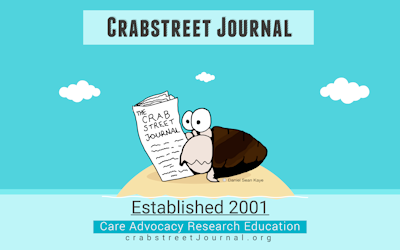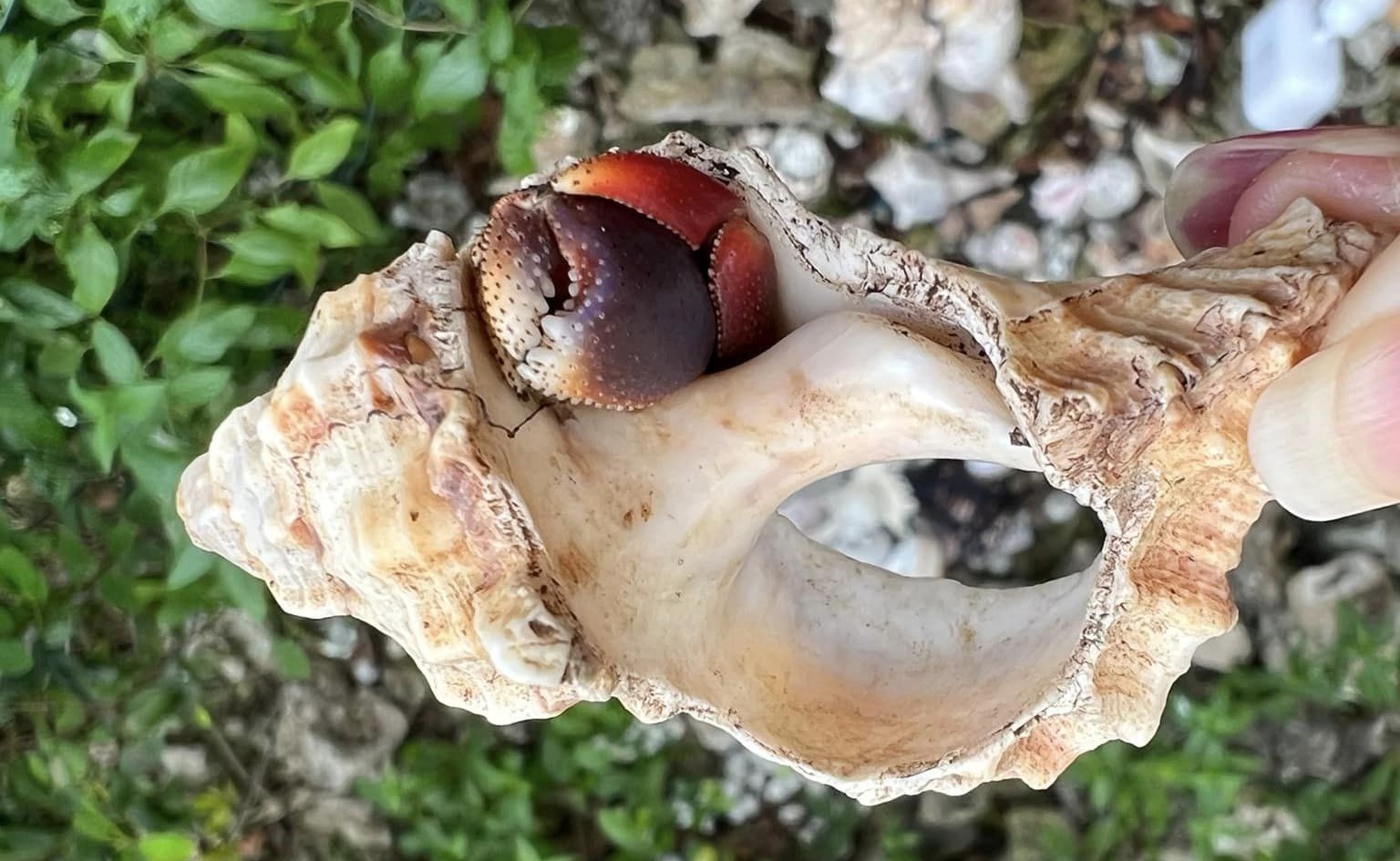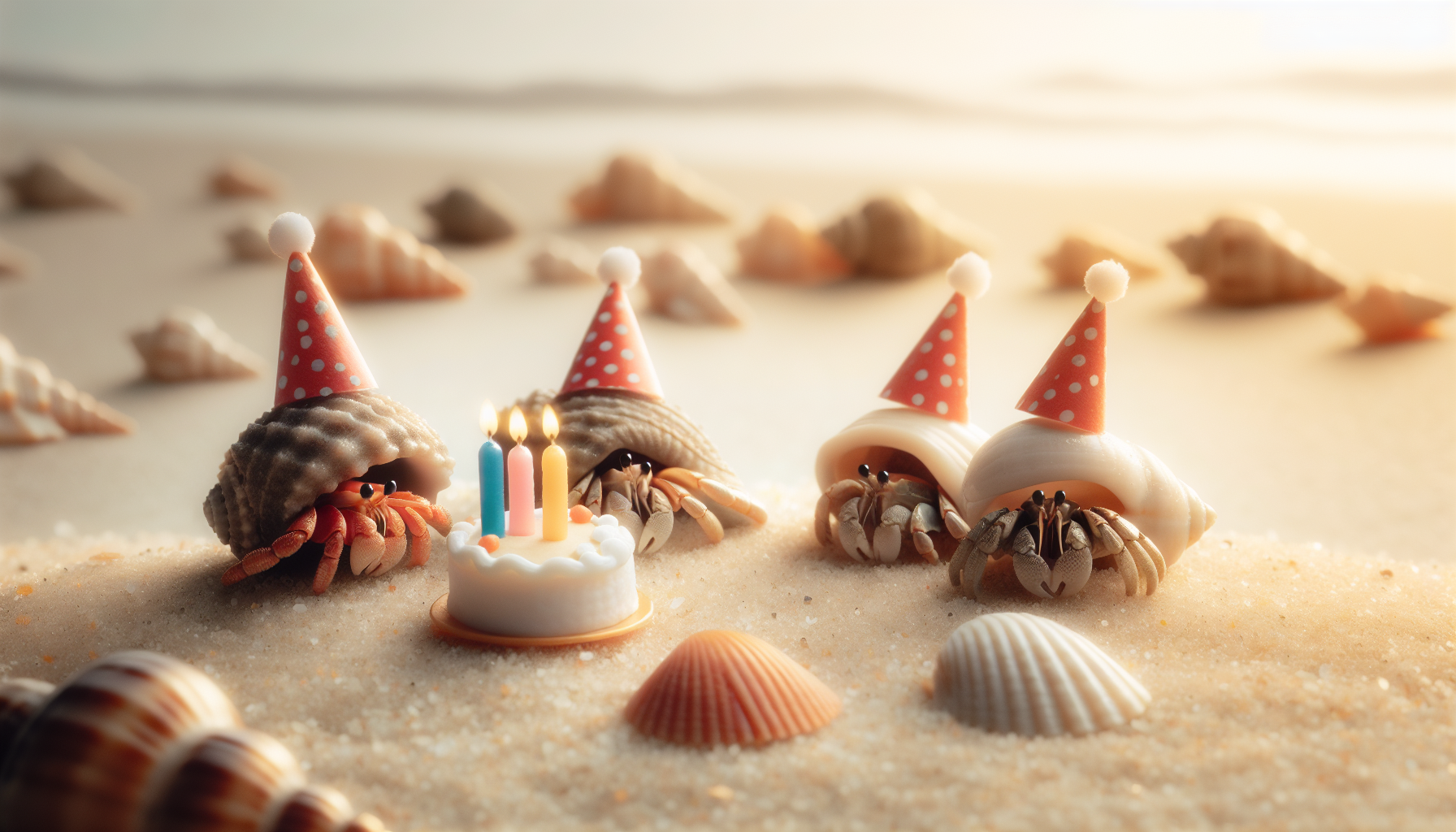
Painted shells are inhumane and unnecessary and destroy a much-needed natural resource. Please speak out about this to your local pet shops that continue to order hermit crabs in painted shells just so they can charge more for them.
Hermit crabs are forced out of their natural shell. One method can be seen in the video below, the crabs are placed in a vice and their natural shell is destroyed. Other methods include heating the shell so the crab abandons it, drilling a hole, and poking the crab with a wire until it abandons the shell.
Hermit crabs are often forced into the shells while the paint is still wet. The paint could trap the crab when it dries.
Hermit crabs will not voluntarily pick painted shells. In all instances, some form of abuse is used to get the crab into the painted shells. Painted shells exist solely to attract small children who will cry and moan until their parent gives in and buys the Sponge Bob shell.
Hermit crabs modify their shells to make them fit better. They may ingest paint directly from the shell or as it flakes off and contaminates the habitat, food, and water.
Gluing googly eyes and other junk to the shell throws off the balance of the shell making it difficult for the crab to walk or climb.
Hermit crabs have a complex relationship with their shells. Without a shell, for protection from predators and desiccation, the hermit crab will die. See the reference section below for a sample of research written about hermit crabs and their shell homes.
Due to a lack of shells and excess garbage, some hermit crabs are wearing trash. Just one more reason we should all Say NO to Painted Shells. We should all leave shells on the beach for the wild hermit crabs.
You can donate your painted shells to us for display at the exotic pet show we attend monthly. Use this form to get the mailing address and let us know the shells are coming.
How they are painted overseas:
Beautiful natural shells are the best option:


References:
https://environment.bm/land-hermit-crab
https://www.smithsonianmag.com/science-nature/beach-tourists-who-collect-shells-may-be-harming-environment-180949368/
https://www.nationalgeographic.com/magazine/article/plastic-planet-animals-wildlife-impact-waste-pollution
Abrams, P. Shell selection and utilization in a terrestrial hermit crab, Coenobita compressus (H. Milne Edwards). Oecologia 34, 239–253 (1978). https://doi.org/10.1007/BF00345169
Michael R. Conover, The importance of various shell characteristics to the shell-selection behavior of hermit crabs, Journal of Experimental Marine Biology and Ecology, Volume 32, Issue 2, 1978,
Pages 131-142, ISSN 0022-0981, https://doi.org/10.1016/0022-0981(78)90111-9.
Crump, Andrew; Mullens, Charlotte; Bethell, Emily J.; Cunningham, Eoghan M.; Arnott, Gareth (2020): Supplementary material from “Microplastics disrupt hermit crab shell selection”. The Royal Society. Collection. https://doi.org/10.6084/m9.figshare.c.4938171.v1
Elena Tricarico, Francesca Gherardi, Resource assessment in hermit crabs: the worth of their own shell, Behavioral Ecology, Volume 18, Issue 3, May 2007, Pages 615–620, https://doi.org/10.1093/beheco/arm019
Laidre ME. Social conquest of land: Sea-to-land changes in shell architecture and body morphology, with consequences for social evolution. Arthropod Struct Dev. 2021 Jul;63:101064. doi: 10.1016/j.asd.2021.101064. Epub 2021 Jun 4. PMID: 34098322.
Volatile shell-investigation cues of land hermit crabs: Effect of shell fit, detection of cues from other hermit crab species, and cue isolation. J Chem Ecol. 1994 Jul;20(7):1457-82. doi: 10.1007/BF02059873.PMID: 24242644



